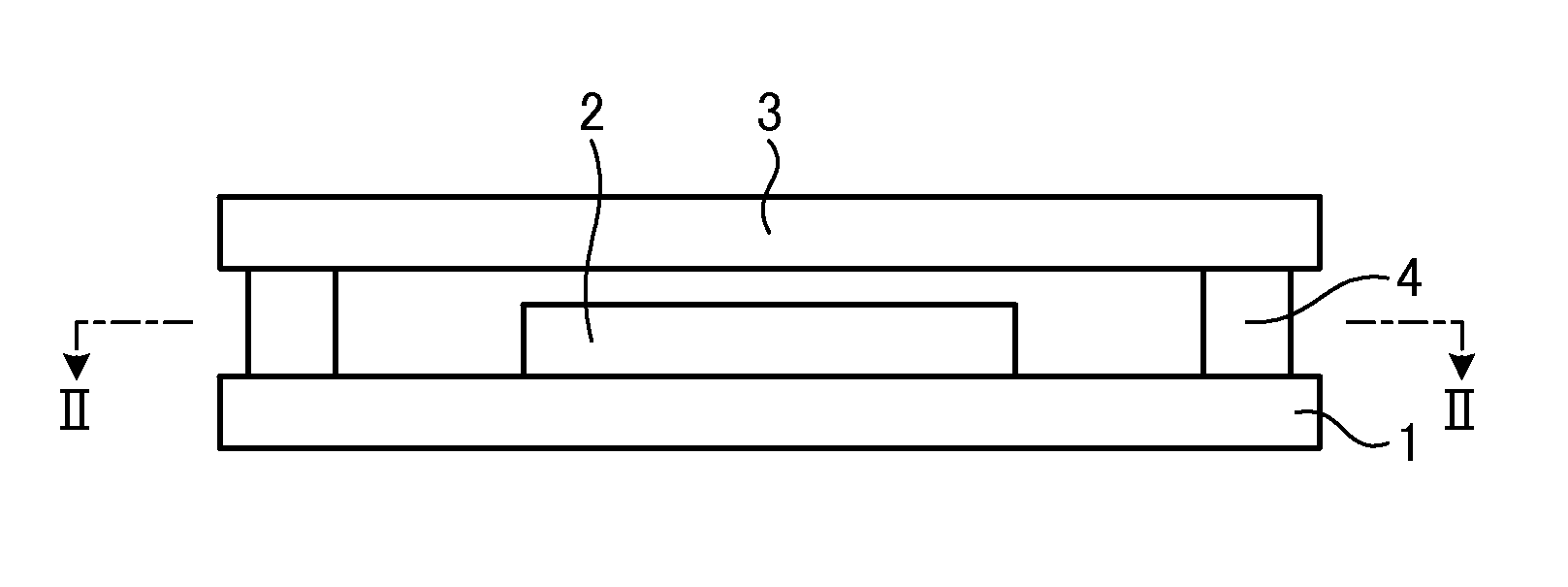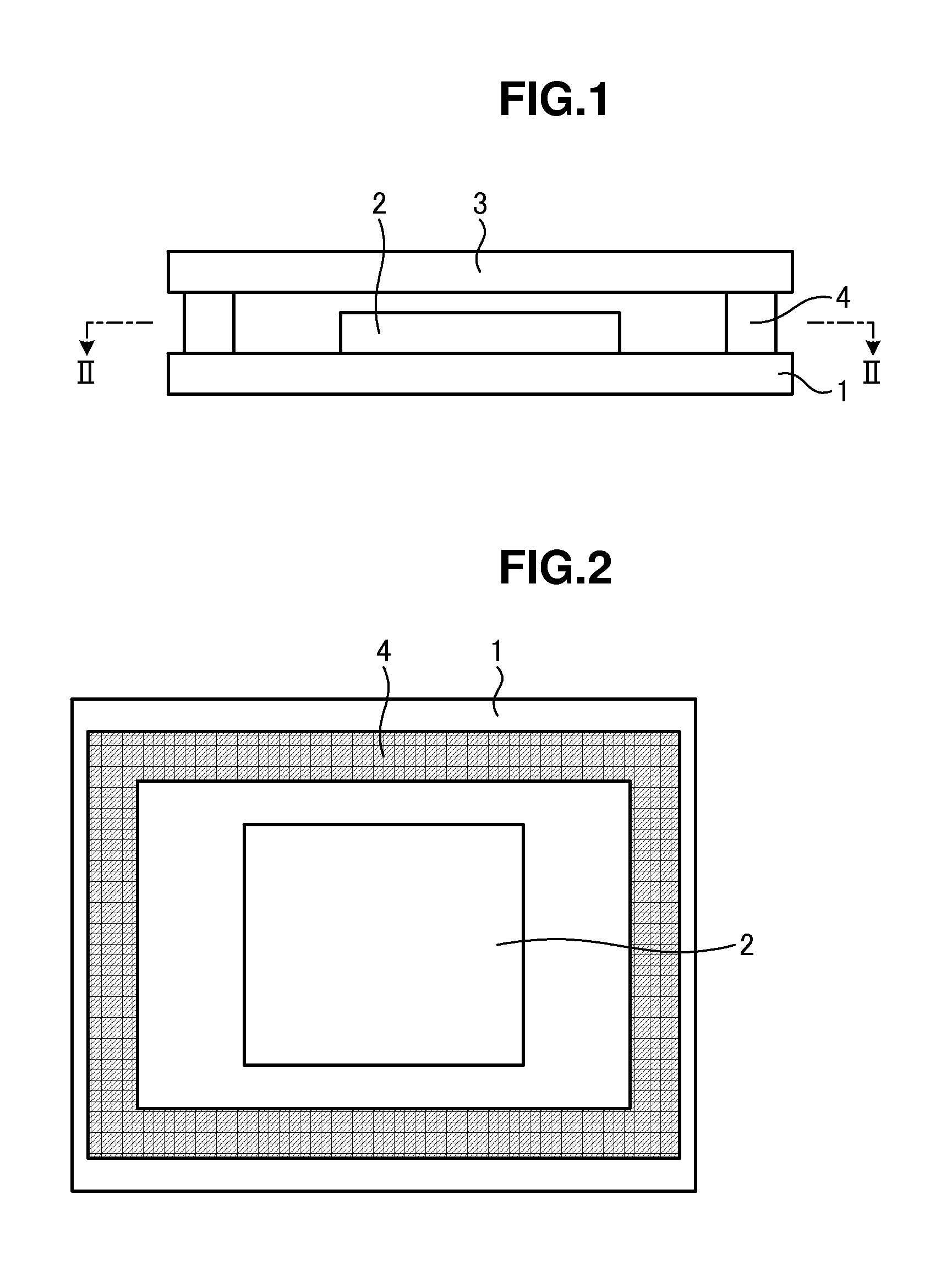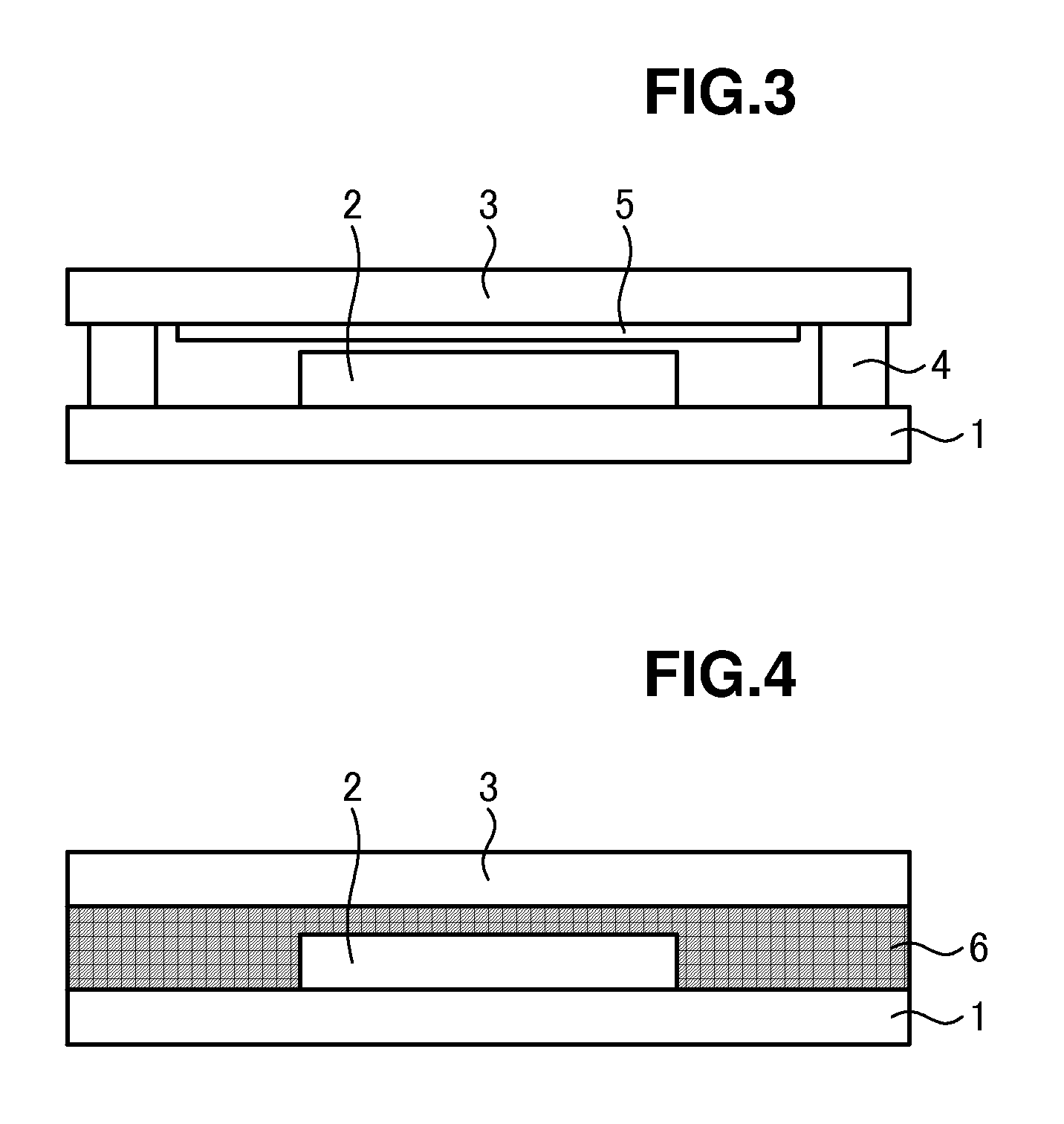Method for manufacturing organic light-emitting device and organic light-emitting device
a technology manufacturing methods, which is applied in the direction of solid-state devices, sustainable manufacturing/processing, and final product manufacturing, etc., can solve the problems of difficult to obtain desired characteristics unstable air of electron injecting materials, and dark spot or lowering of life of organic light-emitting devices, so as to prevent the performance degradation of organic el elements and reduce manufacturing costs
- Summary
- Abstract
- Description
- Claims
- Application Information
AI Technical Summary
Benefits of technology
Problems solved by technology
Method used
Image
Examples
reference example 1
Synthesis of 2,7-dibromo-9,9-bis[3-ethoxycarbonyl-4-[2-[2-(2-methoxyethoxy)ethoxy]ethoxy]phenyl]-fluorene (compound A)
[0347]2,7-dibromo-9-fluorenone (52.5 g), ethyl salicylate (154.8 g), and mercapto acetic acid (1.4 g) were charged into a 300 mL flask and was purged with nitrogen. Thereto, methanesulfonic acid (630 mL) was added thereto and the resultant reaction mixture was stirred at 75° C. all night. The reaction mixture was left to be cooled down and was charged into ice water and the resultant reaction mixture was stirred for 1 hour. A generated solid was filtered and the solid was washed with heated acetonitrile. The washed solid was dissolved in acetone and from the resultant acetone solution, a solid was recrystallized and was filtered. The resultant solid (62.7 g), 2-[2-(2-methoxyethoxy)ethoxy]-p-toluene sulfonate (86.3 g), potassium carbonate (62.6 g), and 18-crown-6 (7.2 g) were dissolved in N,N-dimethylformamide (DMF) (670 mL) and the resultant reaction solution was tra...
reference example 2
Synthesis of 2,7-bis(4,4,5,5-tetramethyl-1,3,2-dioxaborolan-2-yl)-9,9-bi s[3-ethoxycarbonyl-4-[2-[2-(2-methoxyethoxy)ethoxy]ethoxy]phenyl]-fluorene (compound B)
[0348]In a nitrogen atmosphere, the compound A (15 g), bis(pinacolate)diboron (8.9 g), [1,1′-bis(diphenylphosphino)ferrocene]dichloropalladium (II) dichloromethane complex (0.8 g), 1,1′-bis(diphenylphosphino)ferrocene (0.5 g), potassium acetate (9.4 g), and dioxane (400 mL) were mixed and the resultant reaction mixture was heated to 110° C. to heating-reflux the reaction mixture for 10 hours. The reaction mixture was left to be cooled down and was filtered and the filtrate was concentrated under reduced pressure. The reaction mixture was washed with methanol for three times. The resultant precipitate was dissolved in toluene and to the resultant solution, an activated carbon was added, followed by stirring the resultant mixture. Then, the mixture was filtered and the filtrate was concentrated under reduced pressure, thus obta...
reference example 3
Synthesis of poly[9,9-bis[3-ethoxycarbonyl-4-[2-[2-(2-methoxyethoxy)ethoxy]ethoxy]phenyl]-fluorene (polymer A)
[0349]In an inert atmosphere, the compound A (0.55 g), the compound B (0.61 g), (triphenylphosphine)palladium (0.01 g), methyltrioctylammonium chloride (manufactured by Aldrich Corp.; trade name: Aliquat 336 (registered trade mark)) (0.20 g), and toluene (10 mL) were mixed and the resultant reaction mixture was heated to 105° C. Into the reaction mixture, a 2M sodium carbonate aqueous solution (6 mL) was dropped and the resultant reaction mixture was refluxed for 8 hours. To the reaction mixture, 4-tert-butylphenylboronic acid (0.01 g) was added and the resultant reaction mixture was refluxed for 6 hours. Next, to the reaction mixture, a sodium diethyldithiocarbamate aqueous solution (10 mL, concentration: 0.05 g / mL) was added and the resultant reaction mixture was stirred for 2 hours. The reaction mixture was dropped into 300 mL of methanol and the resultant reaction mixtur...
PUM
| Property | Measurement | Unit |
|---|---|---|
| pressure | aaaaa | aaaaa |
| thickness | aaaaa | aaaaa |
| thickness | aaaaa | aaaaa |
Abstract
Description
Claims
Application Information
 Login to View More
Login to View More - R&D
- Intellectual Property
- Life Sciences
- Materials
- Tech Scout
- Unparalleled Data Quality
- Higher Quality Content
- 60% Fewer Hallucinations
Browse by: Latest US Patents, China's latest patents, Technical Efficacy Thesaurus, Application Domain, Technology Topic, Popular Technical Reports.
© 2025 PatSnap. All rights reserved.Legal|Privacy policy|Modern Slavery Act Transparency Statement|Sitemap|About US| Contact US: help@patsnap.com



